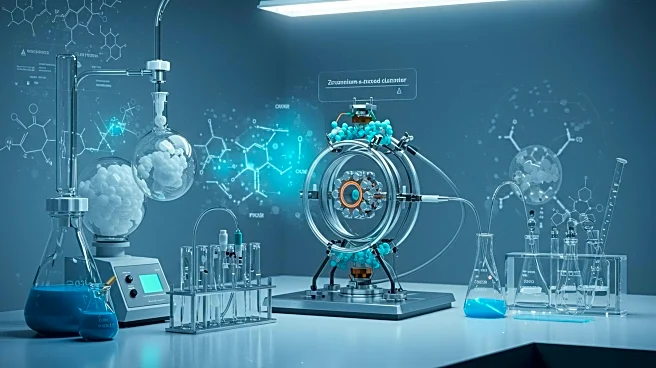What's Happening?
An international research team, including members from Washington State University, University of North Dakota, and National Taiwan University, has developed a novel method to enhance platinum-ceria catalysts using single-atom zirconium. This breakthrough, published in Nature Communications, aims to improve pollution control systems by making them more energy-efficient and cost-effective. The zirconium atoms act as 'smart assistants' to platinum, modifying its environment to facilitate easier oxygen activation. This process is crucial for breaking down harmful gases such as carbon monoxide, propane, and propylene. The research utilized advanced X-ray absorption spectroscopy to confirm the atomic dispersion of zirconium and its formation of unique Zr-O-Pt structures, which significantly reduce the energy barrier for oxygen activation.
Why It's Important?
The development of zirconium-enhanced catalysts represents a significant advancement in pollution control technology. By enabling pollutant breakdown at lower temperatures, these catalysts require less energy, making them ideal for applications in automotive exhaust treatment, industrial emissions control, and sustainable chemical manufacturing. This innovation could lead to cleaner air and more sustainable industrial processes, reducing reliance on precious metals and lowering operational costs. The research highlights the potential of atomic-level design in transforming catalytic performance, offering a pathway to more environmentally friendly technologies.
What's Next?
The research team plans to further explore the applications of zirconium-enhanced catalysts in various industries. Potential next steps include scaling up the technology for commercial use and testing its effectiveness in real-world pollution control systems. Stakeholders such as automotive manufacturers and industrial facilities may show interest in adopting this technology to meet stricter environmental regulations and improve sustainability. Continued collaboration among international research institutions could lead to additional breakthroughs in catalyst design and environmental technology.
Beyond the Headlines
This development could have broader implications for the field of materials science and environmental engineering. The use of single-atom catalysts may inspire new approaches to designing efficient and sustainable chemical processes. Additionally, the research underscores the importance of international collaboration in addressing global environmental challenges, potentially influencing policy decisions and funding priorities in pollution control and clean technology research.











